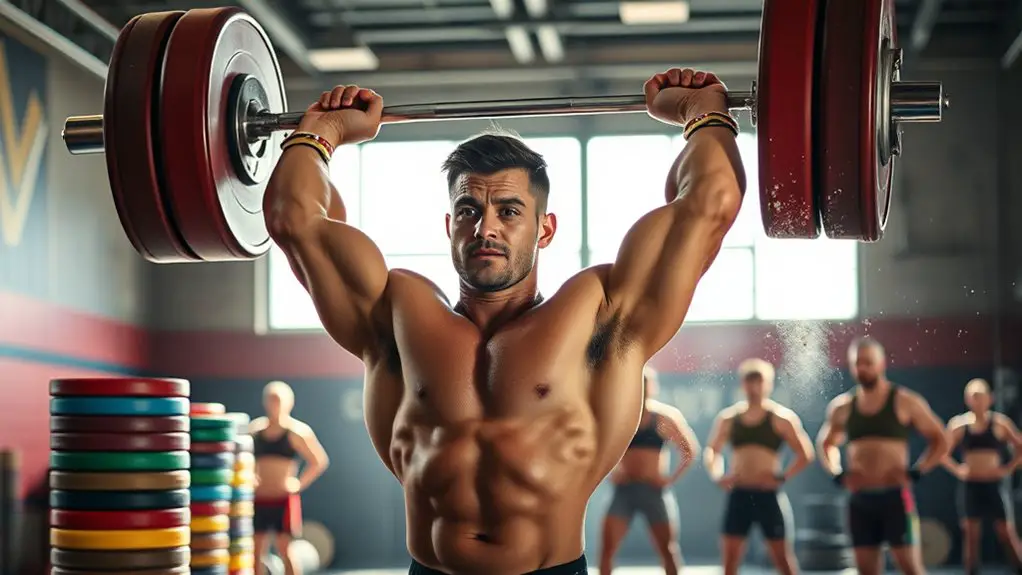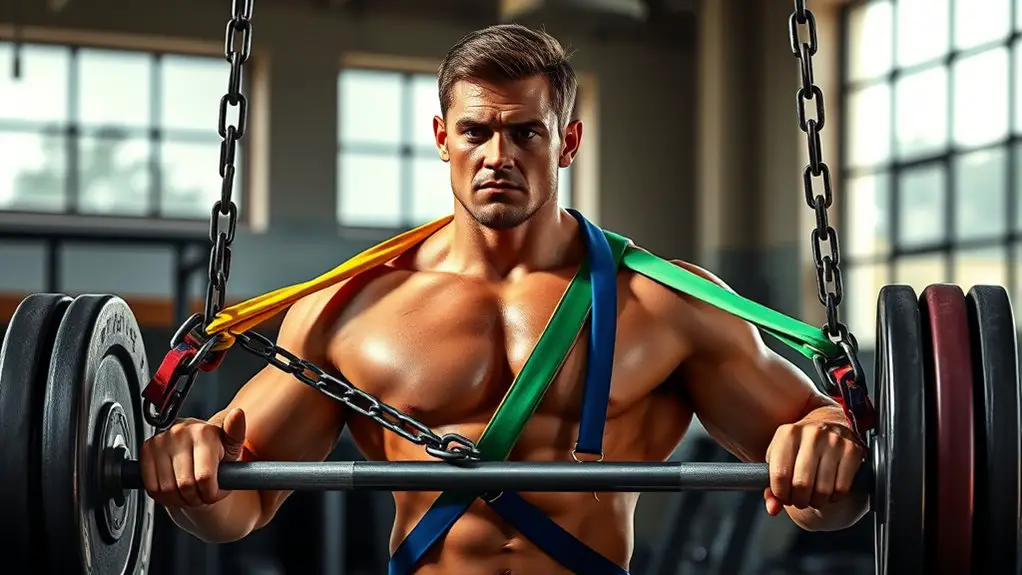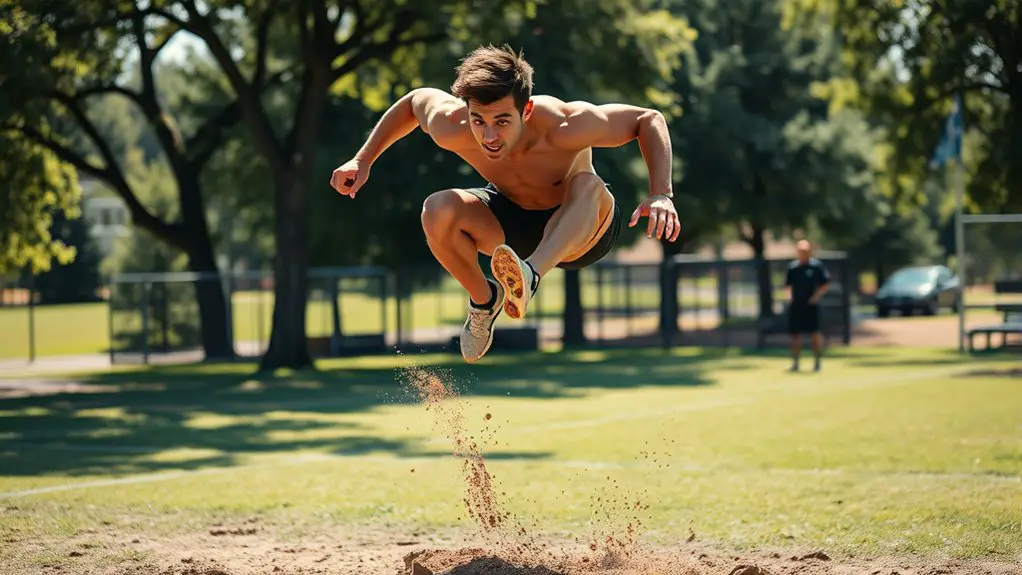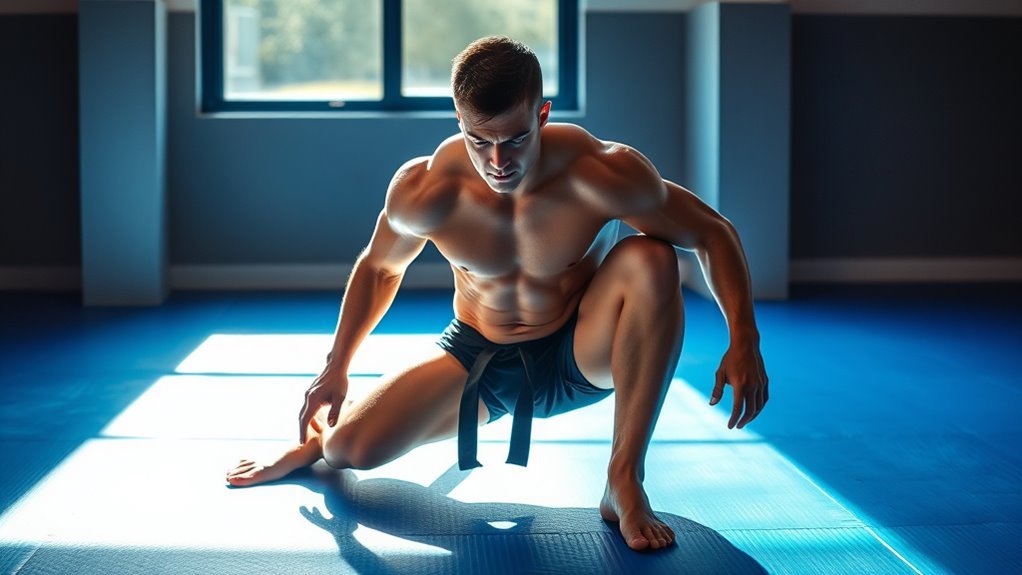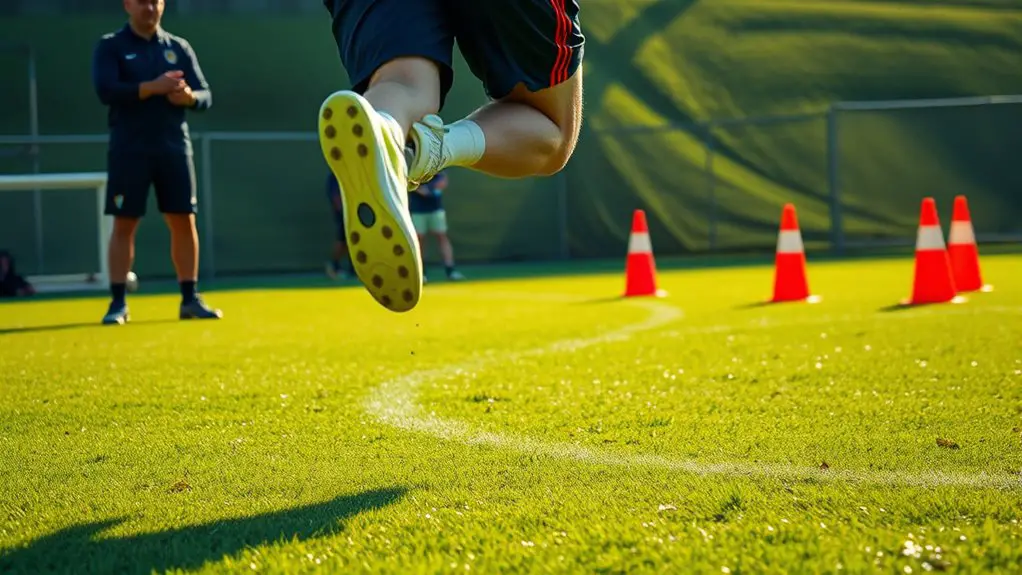Olympic weightlifting techniques can seriously boost your sports performance. By mastering lifts like the clean and jerk and the snatch, you improve your strength, power, and explosiveness. Focusing on proper form, explosive hip extension, and incorporating strength training will enhance your overall athleticism. Plus, these lifts help reduce injury risk when done correctly. Want to discover more about optimizing your training for better results? There's a lot more to explore on this topic!
Understanding the Basics of Olympic Weightlifting
Olympic weightlifting is a dynamic sport that combines strength, speed, and technique. If you're looking to embrace your physical potential, understanding the basics is essential. At its core, Olympic weightlifting involves two main lifts: the snatch and the clean and jerk. These lifts require not just raw power but also finesse, as they demand precise timing and body mechanics.
You'll want to focus on your stance, grip, and the flow of movement. Each lift begins with a strong foundation and progresses through explosive actions that can feel liberating. It's about pushing your limits while maintaining control, allowing you to express your individuality in your training. Incorporating proper technique is crucial for enhancing lifting efficiency and reducing injury risk.
As you explore the fundamentals, remember that mastering these basics will set you on a path to greater performance. Immerse yourself, embrace the challenge, and let your journey in Olympic weightlifting unfold with freedom and excitement.
The Clean and Jerk: Technique Breakdown
When you're preparing for the Clean and Jerk, your starting position is essential for success. Getting that right will set you up for effective overhead stabilization during the lift. Let's break down these key techniques to help you maximize your performance. Incorporating Olympic lifts into your training routine can significantly enhance your explosive strength and overall athletic performance.
Starting Position Essentials
Mastering the starting position is essential for a successful clean and jerk, as it sets the foundation for the lift. When you approach the bar, stand with your feet hip-width apart, toes slightly pointed out. Bend at your hips and knees while keeping your back straight, and grip the bar just outside your legs. Your shoulders should be slightly over the bar, and your chest up. Engage your core to maintain stability and guarantee your weight is balanced over your midfoot. This position not only promotes safety but also maximizes your power potential. Remember, every great lift starts here, so take your time to find what feels right for you. With practice, you'll unleash the freedom to lift heavier and with confidence.
Overhead Stabilization Techniques
Achieving proper overhead stabilization is essential for a successful clean and jerk, as it guarantees the barbell remains secure and balanced during the lift. To master this technique, focus on your grip; your hands should be slightly wider than shoulder-width, allowing for maximum control. As you press the bar overhead, engage your core, keeping your torso upright and your elbows locked. This strong alignment helps you channel power effectively, preventing the bar from wobbling.
Additionally, practice breathing deeply and maintaining a steady gaze at a fixed point. This mental focus enhances stability and confidence. Don't forget to engage your lats, creating a solid "shelf" for the bar. With these techniques, you'll elevate your performance and truly embrace the freedom of movement in weightlifting.
Mastering the Snatch: Key Elements
When mastering the snatch, your grip and stance are essential for setting a solid foundation. Understanding the bar path mechanics will help you lift more efficiently and safely. Incorporating functional strength training into your routine can significantly enhance your overall performance and technique. Let's break down these key elements to enhance your technique.
Grip and Stance
Getting the grip and stance right is essential for executing a successful snatch. Your grip should be wide enough to allow the barbell to rest comfortably on your shoulders while keeping your elbows high. Typically, a hook grip is preferred for better control and security. Your stance should be roughly shoulder-width apart, ensuring your feet are flat and grounded. This setup gives you a stable base, allowing for smooth movement and balance. As you prepare to lift, engage your core and maintain an upright posture. Remember, a solid grip and stance not only enhance your performance but also help prevent injuries. Embrace the freedom of movement that comes when everything aligns, and you'll feel the power in your lift.
Bar Path Mechanics
With your grip and stance set, the next key element in mastering the snatch is understanding the bar path mechanics. You want the bar to travel in a straight line as much as possible. Think of it as a vertical path—keep it close to your body. As you initiate the lift, focus on driving through your heels and extending your hips. This upward momentum will help maintain that straight line. When you reach the power position, explode upward, shrugging your shoulders to elevate the bar. It's essential to pull yourself under the bar quickly, ensuring your body moves around the weight rather than the weight moving away from you. Embrace this fluid motion, and you'll elevate your performance.
Developing Explosive Power Through Olympic Lifts
Although many athletes focus on strength and technique, developing explosive power through Olympic lifts is essential for enhancing overall performance. Olympic lifts, like the clean and jerk or the snatch, engage multiple muscle groups and require rapid force generation. This explosive movement trains your body to produce power quickly, which translates to better performance in your sport.
To maximize your explosive potential, prioritize proper form and explosive hip extension. Focus on driving through your legs and using your core to stabilize as you lift. Gradually increase your weight while maintaining speed and control, ensuring that your muscles adapt without sacrificing technique. Incorporating proper technique into your training routine will not only improve your strength but also enhance your overall athleticism. By honing your explosive power, you'll experience greater freedom in your movements on the field, court, or track, allowing you to perform at your best when it matters most.
Enhancing Speed and Agility With Weightlifting
While many athletes might prioritize endurance and technique, incorporating weightlifting into your training can greatly enhance your speed and agility. Olympic lifts engage multiple muscle groups, promoting not just strength but also rapid movement and coordination. By adding these lifts to your routine, you'll notice improvements in your overall athleticism.
Here's a quick look at how different lifts can boost your performance:
| Lift Type | Benefits |
|---|---|
| Clean & Jerk | Builds explosive power |
| Snatch | Enhances coordination |
| Front Squat | Improves core stability |
| Power Clean | Increases speed and strength |
Integrating these techniques will free you to move quicker and more efficiently, giving you an edge in your sport. Additionally, incorporating plyometric exercises can further enhance your explosiveness and speed. Embrace the challenge of weightlifting, and watch your agility soar as you break through barriers you never thought possible!
Injury Prevention and Safety Measures
Incorporating Olympic weightlifting into your training can elevate your performance, but it's important to prioritize injury prevention and safety measures. Start by ensuring you have proper form; poor technique can lead to unnecessary strain. Always warm up thoroughly, focusing on mobility and activation exercises to prepare your muscles and joints.
Using appropriate weights is vital—don't push yourself too hard too soon. Gradually increase the load as you build strength and confidence. Wearing supportive footwear can also enhance stability and grip.
Listen to your body. If something feels off, take a step back and assess. Implementing regular recovery practices, like stretching and foam rolling, will help keep you limber and reduce soreness. Additionally, make sure to include proper warm-ups to help prepare your muscles for activity. Finally, consider working with a knowledgeable coach to guide you through complex lifts. By taking these precautions, you'll enjoy the freedom to lift safely and effectively, maximizing your potential without risking injury.
Incorporating Olympic Lifting Into Your Training Regimen
If you're looking to boost your athletic performance, adding Olympic lifting to your training regimen can be a game changer. These lifts enhance strength, power, and explosiveness, making them perfect for athletes in any sport. Start with foundational movements like the clean and jerk or snatch, focusing on form and technique.
Here's a simple breakdown of how to incorporate Olympic lifting:
| Frequency | Volume | Focus |
|---|---|---|
| 2-3 times/week | 3-5 sets | Technique & Power |
| 1-2 times/week | 2-3 sets | Strength & Stability |
| 1 time/week | 1-2 sets | Speed & Agility |
In addition, strength training can help improve your overall athletic performance by boosting power output for explosive movements in sports.
Frequently Asked Questions
What Equipment Is Necessary for Olympic Weightlifting Training?
Did you know that over 70% of athletes improve their performance with proper weightlifting equipment? For your training, you'll need a barbell, plates, weightlifting shoes, a belt, and a platform to release your potential.
How Often Should I Practice Olympic Weightlifting Techniques?
You should practice Olympic weightlifting techniques at least three times a week. Consistency's key, but listen to your body. Balance training with recovery to avoid burnout, and enjoy the freedom to progress at your own pace.
Can Beginners Safely Perform Olympic Lifts Without a Coach?
Can you really master complex lifts without guidance? While it's tempting, without a coach, you might miss critical form corrections, increasing injury risk. Consider starting with proper instruction to guarantee your safety and technique development.
What Are Common Mistakes to Avoid in Olympic Weightlifting?
When you're weightlifting, avoid rushing through lifts, neglecting form, and overlooking warm-ups. Don't let ego dictate weight; focus on technique first. Keep your core engaged, and remember to breathe—staying mindful is key to progress.
How Does Nutrition Impact Olympic Weightlifting Performance?
Imagine your body as a finely-tuned machine; without the right fuel, it can't perform at its best. Nutrition's essential for energy and recovery, so give yourself the freedom to nourish and thrive in every lift.
